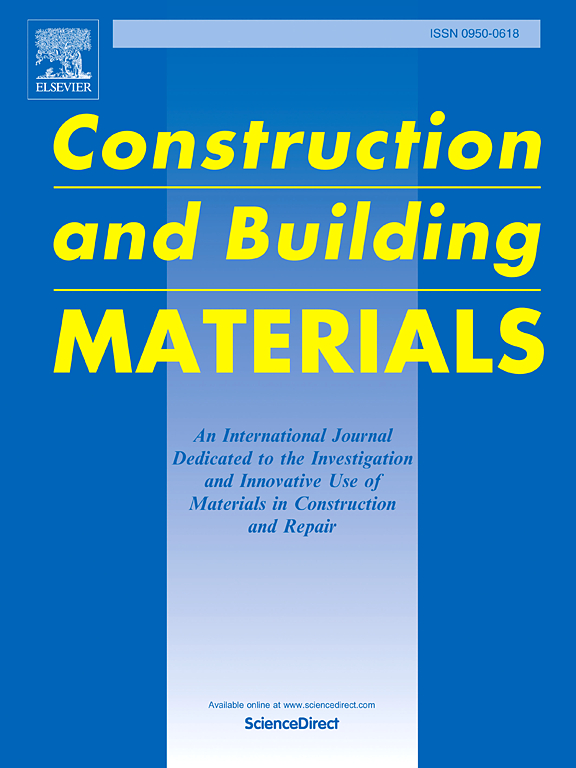High temperature degradation mechanism, mechanical properties and constitutive model of reed straw reinforced brick aggregate concrete
IF 7.4
1区 工程技术
Q1 CONSTRUCTION & BUILDING TECHNOLOGY
引用次数: 0
Abstract
The application of natural plant fibers in concrete promotes the sustainable development of green buildings, but its high temperature resistance is an important factor that must be considered in practical engineering applications. In this study, the high-temperature degradation mechanism of brick aggregate reed straw concrete (BARSC) was analyzed by simultaneous thermal analysis, X-ray diffraction and scanning electron microscopy, the mechanical properties of concrete before and after high temperature were tested, an axially compressed constitutive model was established, and a life cycle assessment of its production process was conducted. The results show that: At 20 ℃-500 ℃, cracks appear in the reed-matrix ITZ due to moisture evaporation, dehydration and decomposition of C-S-H gel, and shrinkage, pyrolysis and carbonization of reed straw. At 500 ℃-900 ℃, due to the phase change and expansion of SiO2, the transformation of reed straw into ash and the decomposition of CaCO3, the concrete becomes sparse and porous, the brick-matrix ITZ bond fails, and the structural integrity is lost. Reed straw increases the tensile strength of BARSC by a maximum of approximately 28.6 %. For every 1 % increase in reed straw content, the carbon emissions of concrete are reduced by 4.21 kg/m3. The combination of brick aggregates and reed straw makes comprehensive use of industrial and agricultural waste, providing a new method for carbon emission reduction and solid waste recycling in the construction industry.
求助全文
约1分钟内获得全文
求助全文
来源期刊

Construction and Building Materials
工程技术-材料科学:综合
CiteScore
13.80
自引率
21.60%
发文量
3632
审稿时长
82 days
期刊介绍:
Construction and Building Materials offers an international platform for sharing innovative and original research and development in the realm of construction and building materials, along with their practical applications in new projects and repair practices. The journal publishes a diverse array of pioneering research and application papers, detailing laboratory investigations and, to a limited extent, numerical analyses or reports on full-scale projects. Multi-part papers are discouraged.
Additionally, Construction and Building Materials features comprehensive case studies and insightful review articles that contribute to new insights in the field. Our focus is on papers related to construction materials, excluding those on structural engineering, geotechnics, and unbound highway layers. Covered materials and technologies encompass cement, concrete reinforcement, bricks and mortars, additives, corrosion technology, ceramics, timber, steel, polymers, glass fibers, recycled materials, bamboo, rammed earth, non-conventional building materials, bituminous materials, and applications in railway materials.
 求助内容:
求助内容: 应助结果提醒方式:
应助结果提醒方式:


